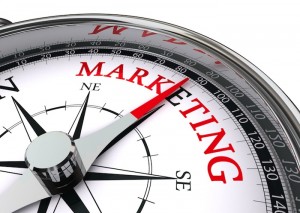 Atop a hill in Istanbul, Turkey, sits a structure that houses 61 covered streets made up of more than 3,000 storefronts selling pashminas, rugs, knives, gold, silver, clothing and other trinkets to hundreds of thousands of daily visitors. Shortly after the Ottoman conquest of the city formerly known as Constantinople (mid-1400s), the infamous Grand Bazaar, also known as Kapalıçarşı and Büyük Çarşı, was established to bring together traders from the East and West. While merchandise has evolved over the years, I recently had an opportunity to visit this world-famous marketplace and witness the simple tactics its traders have seemingly employed for centuries to lead to higher sales conversions from locals and tourists alike.
Atop a hill in Istanbul, Turkey, sits a structure that houses 61 covered streets made up of more than 3,000 storefronts selling pashminas, rugs, knives, gold, silver, clothing and other trinkets to hundreds of thousands of daily visitors. Shortly after the Ottoman conquest of the city formerly known as Constantinople (mid-1400s), the infamous Grand Bazaar, also known as Kapalıçarşı and Büyük Çarşı, was established to bring together traders from the East and West. While merchandise has evolved over the years, I recently had an opportunity to visit this world-famous marketplace and witness the simple tactics its traders have seemingly employed for centuries to lead to higher sales conversions from locals and tourists alike.

Interact Before the Money Exchange
When the Grand Bazaar was originally built, there were no actual storefronts within its covered streets. As it was explained to me, traders set up their merchandise against an interior wall and interacted with the passing crowd. Even with the actual stores that exist today, this interaction custom remains.
 As a mall-shopping American, I’m used to salesmen standing behind the register, waiting until I either ask for their assistance or am ready to make a purchase to begin interacting with me. I thought each and every Grand Bazaar salesman was going to harass me until I stepped up to their shop. Silly American.
As a mall-shopping American, I’m used to salesmen standing behind the register, waiting until I either ask for their assistance or am ready to make a purchase to begin interacting with me. I thought each and every Grand Bazaar salesman was going to harass me until I stepped up to their shop. Silly American.
While there are desperate traders who do shout at passers-by, the vast majority (and those that sell more, I would guess) sit on their stool, drinking hot apple tea, waiting to talk with those who have shown an active interest in their storefront. Once interest has been shown, they do their best to understand what you’re looking for, explain their differentiating factors and create an interactive experience that leads to a sale. As a customer, you are never made to feel ignored, even if the language barrier makes conversation consist of more hand gestures than words. They will leave you alone if you say you need time to browse, but are ready to assist you whenever you are ready. Quite refreshing.
Share the Story
My fiancé and I walked up to a storefront that sold wooden and metal boxes of various shapes and sizes. Each one had intricate designs etched into its top and side panels. While we found them beautiful, when the salesman told us that the tiny box I was holding was $30 TL, we quickly became disinterested. To us, there was no reason why this tiny box that could barely hold a ring was worth roughly $18 USD. Instead of immediately bartering the price down or giving up on the sale, the man quickly pulled out his cell phone. He couldn’t speak English well, but he pointed to our faces and then to the screen and said, “See.”
The man had pulled up a video of a woman’s hands working with what appeared to be a wooden box. She was etching and burning it by hand. We watched on the tiny screen as it took her about two minutes to create one centimeter-wide square on its side. While technology certainly made this easier, despite a language barrier, he had shared the story visually and made us understand the value of the merchandise.
 Take Time to Make Sales Experiential
Take Time to Make Sales Experiential
I bought a Turkish rug. For anyone who has been to Istanbul, you may roll your eyes because you know how “tourist-y” this purchase is. To be frank, we had no intention of purchasing a rug and would never have done so if it were not for the process that took place.
We were graciously ushered into the carpet store only after the salesman spent 45 minutes touring with us through the Blue Mosque, taking our picture, explaining every detail of its history and construction, and why he is proud of being both Turkish and Muslim. When we arrived in the store, we were presented with tea, a custom in most stores, and immediately told that we did not have to buy anything. I rolled my eyes because of course their ultimate intention was to sell something, but they were true to their word and never mentioned pricing or asked which one we would be interested in purchasing until thirty minutes later, when I asked about a price on one.
 Throughout the visit, we were given a thorough carpet industry lesson from three very passionate industry professionals. We learned about what differentiates Turkish rugs from Persian rugs, what materials are used, how they are traded abroad and why it takes so long to build a silk one correctly. They showed us modern patterns and ancient ones, large and small.
Throughout the visit, we were given a thorough carpet industry lesson from three very passionate industry professionals. We learned about what differentiates Turkish rugs from Persian rugs, what materials are used, how they are traded abroad and why it takes so long to build a silk one correctly. They showed us modern patterns and ancient ones, large and small.
We ended up spending about two hours in their shop and left with a tiny rug (roughly the size of a doormat) that I bought because I wanted to remember the experience. They were gracious throughout the entire process and acted as though I had bought one of their $10,000 beauties. One of them has since friended us on Facebook, as he had promised to do while we were there, so that we can help him plan his first trip to America next year.
They shared their passion for over an hour. We asked every question we could think of. We walked on various rugs and arranged them to see how light affects their colors. In the end, the experience alone was worth making an unexpected purchase.
And DON’T
With over 3,000 merchants, there were definitely some “sales don’ts” to be found throughout the bazaar. They include:
- Don’t follow a person around who has shown no interest in your products and has departed your sales area. That IS borderline harassment. If you ever meet my fiancé, ask him about the “socks guy.”
- Don’t try to pass imitation products off as the real thing. Honesty means you can hold your head high and earn repeat business. To anyone traveling to Istanbul, do not buy perfume there.
- Don’t offend a customer, even while trying to be honest about your product offerings. Apparently, my feet are too large for Turkish slippers.
- Don’t show desperation or be willing to part with products for less than their cost.
- Don’t become agitated with customers for presenting an inconvenient form of payment (i.e. large bills). They’re buying something from you.
While I wouldn’t want to shop at the Grand Bazaar regularly (one only needs so many pashminas), the salesmen there know how to market and sell. It’s worth a “training” visit.









